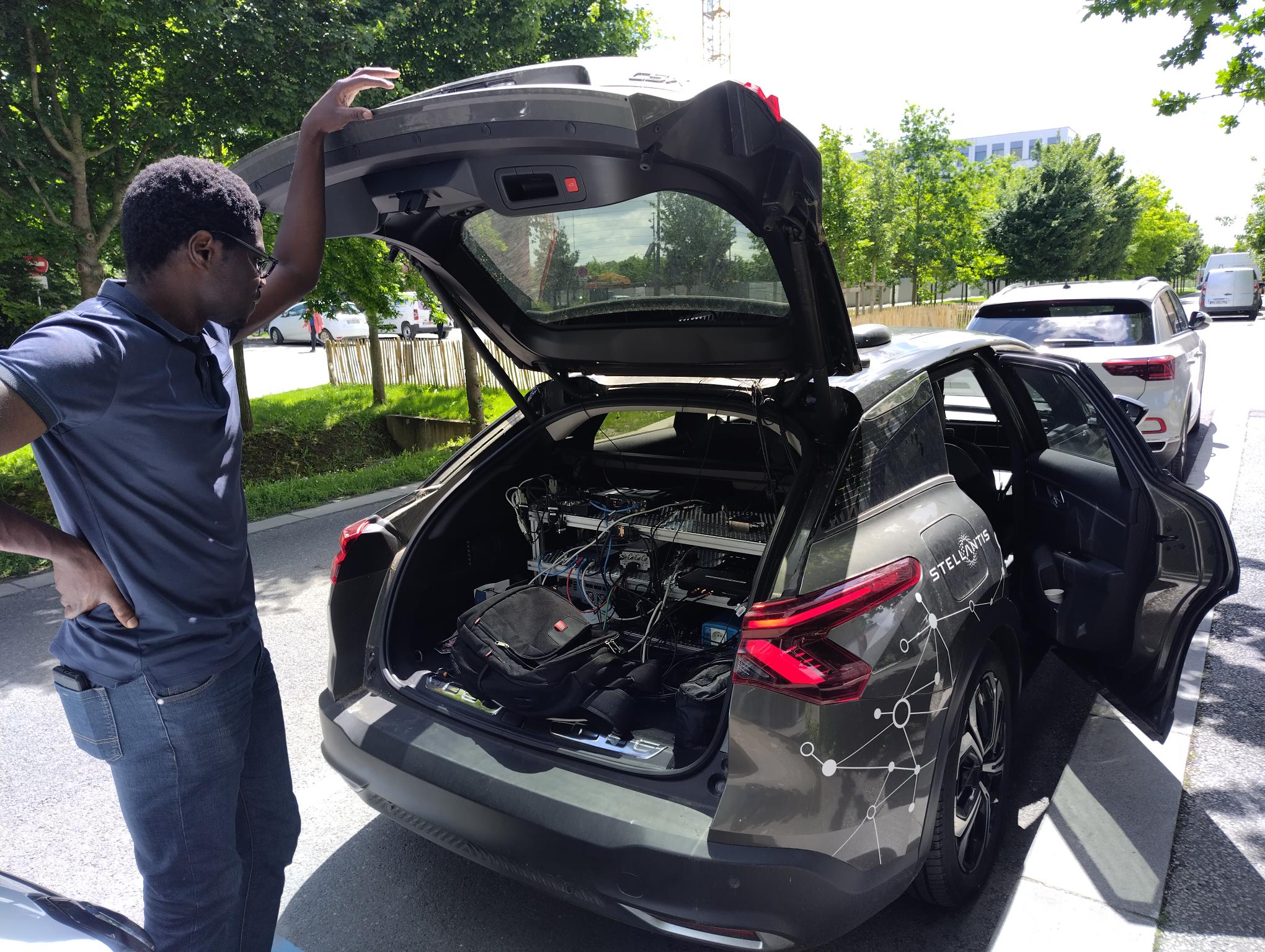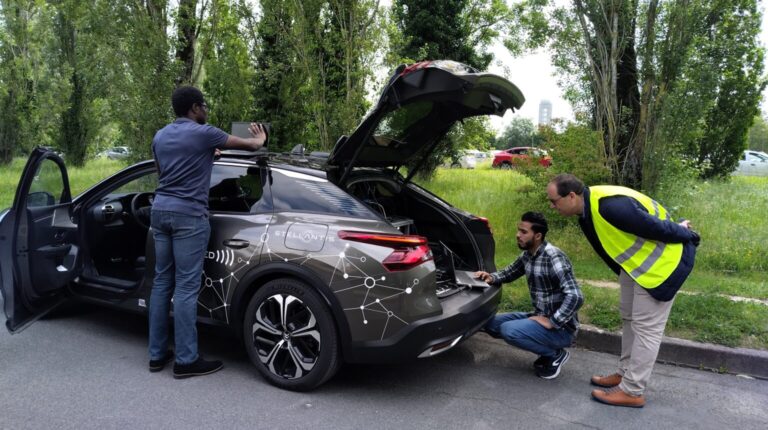5G is set to revolutionize transportation by enabling vehicles to communicate with each other and roadside infrastructure. The France-based 5G OpenRoad project is delving into the benefits and challenges of 5G technology. It emphasizes network infrastructure, roadside units, data and service platforms and operational safety validation of the C-V2X system. As the initiative wraps up this year, ATTI speaks with Michel Guiga, coordinator of the global 5G OpenRoad consortium, to discuss the findings.
What are the goals of the 5G OpenRoad consortium?
The project was founded in 2020 and is due to finish at the end of 2024. It has involved multiple partners including automotive manufacturers, telecoms companies, startups and cybersecurity specialists. It is worth €90m (US$97m), and government and Paris regional subsidies account for €30m (US$32m) of that.
The aim is to understand the benefits of 5G and connectivity to improve road safety for future vehicles. That includes autonomous vehicles, which will need to be connected, but also normal cars that are on the road today. We’re looking at what offboard information can be used that cannot be captured by the car’s own cameras and sensors.
The purpose of the project is mainly to understand what should be introduced into the vehicle in terms of communications technologies to be able to capture information from outside of the car. From the perspective of a city, we want to establish what’s needed in terms of infrastructure such as roadside units, cameras and especially 5G, data processing platforms. Here, we’re talking about C-V2X.
Please tell us about the autonomous shuttle experiments you have conducted.
The objective was to see if we could operate a shuttle autonomously connected via 5G without a driver. We looked at the capability of the 5G to communicate data with a quality of service that is robust enough to be able to remotely manage the shuttle. With the low latency of the end-to-end 5G-based acquisition chain, which is around 500ms, we have been able to capture information at the supervision center in real time.
Once we validated the benefits of 5G for this operation, we were able to introduce new information to the shuttle from roadside units. In some places, there may be things the shuttle cannot see with the onboard sensors; offboard units provide this information. As a result, we were able to increase the speed of the shuttle and comfort for the passengers.
We now have an autonomous shuttle operating in Paris, transporting 180 people a day with no problem at all, and we are working toward getting rid of the operator before the end of the year. We have already tested this on private tracks and we’ve done some experimentation on public roads. Every day it’s a challenge and we continue to capture more and more information to enable us to achieve that.
Can you tell us us about the autonomous logistics operation you’ve established?
We have implemented an autonomous shuttle at Carrefour supermarket and it has been delivering to a university campus for a year. The vehicle goes up to 70km/h, which is the speed limit on this road.
We had some problems due to trees along the road, for example, so we had to invent strategies to keep connectivity. In addition, there are lots of roundabouts (traffic circles) in France and not everybody respects the rules or priorities on crossroads, so sometimes the shuttle would hesitate to go. The learning curve has been very quick, and within three weeks we were operating at 99% functionality with only 1% of disengagement time.

How important is 5G connectivity in the implementation of autonomous transportation?
Most importantly, it is the capability of the connection to provide information in real time that enables us to react remotely if there is a problem. This quality of service was not deliverable with 4G. With 5G, we have been able to implement edge computing to achieve a low latency. Improved cybersecurity is also a key feature of 5G; it ensures that data is transmitted safely and securely. Furthermore, we are studying the capability of 5G to create slices – a dedicated slice of the public network that is fully privatized for connected vehicles, with a dedicated frequency and bandwidth.
What are the next steps for the project?
We have started validating the need for offboard information from roadside units and we have now an operational end-to-end acquisition chain embedding multiple standards. The next step will be to validate the interest in slicing.
We are also looking at use cases on intelligent intersections, which are complicated crossroads where there is high risk due to multiple vehicles, pedestrians, bicycles and tramways. We need to understand how to manage all these different means of transportation and different priorities and avoid accidents involving vulnerable road users. This requires cameras and probably lidars on the crossroads. Messages of pedestrian/bicycle alert and speed recommendations are sent to the vehicle and displayed inside or on the driver’s phone. The information could be provided as messages or using dynamic signals such as lights.
One of the biggest challenges has been communicating reliable information between the components of the communication chain: vehicles, cloud, roadside units, data processing platforms, external information such as weather, for example, and the infrastructure.
We are on track and have now a complete perceptions chain that is able to: capture data on the road from vehicles and from open source, consolidate this data in the cloud, turn it into algorithms and send it back to the vehicle as signals. We have demonstrated on open streets that messages sent to the vehicle can avoid a collision with vulnerable users. It is now time to industrialize these systems and implement the regulatory framework to deploy them on open roads.

Researchers at RMIT University in Australia aim to transform the electrification landscape with real-world trials on coordinated charging. ATTI gets the story
The EV Living Lab at RMIT University in Melbourne, Australia, is seeking to deepen the understanding of how electric vehicles affect the electricity grid and, ultimately, how negative impacts can be minimized. Several trials have taken place so far focused on the electricity infrastructure itself.
As part of the initiative, software tools, AI methods and hardware solutions such as smart charging are being developed to facilitate the integration of EVs into the grid. Professor Mahdi Jalili explains, “We are working with energy distribution companies to find out the impact of mass EV uptake on the grid and how we can manage EV loads through co-ordinated charging or distributed energy resources. We are looking at how we can use the photovoltaic cells on rooftops and co-ordinate those with charging, for example.”
In one trial using smart meters, the project team have been recording the consumption of electricity of over 5,000 households in Victoria, some with EVs, every 30 minutes to understand how EV ownership changes their electricity consumption patterns.
“The main issue when you have mass uptake of EVs is that the electricity network needs to be upgraded and usually that is costly. In most cases, the cost is passed directly to customers. That needs to be minimized otherwise uptake of EVs will meaner higher electricity costs,” says Jalili. “We aim to manage the upgrade costs and keep affordability under control, but at the same time, guarantee supply reliability and energy security.”
As part of the university’s research into coordination charging, some energy retailers are incentivizing customers to charge at certain times. In Australia, during the day, wholesale energy prices can be negative due to the high solar power, and as such, EV owners can take advantage of cheap energy to charge the battery.
More experiments will be conducted over the next four to five years in collaboration with distribution partners and technology providers.
“One of the things we will test is vehicle-to-grid and vehicle-to-home, enabling customers to discharge to the grid. We know this will degrade the battery a lot, but it may degrade more than what you get back from the grid,” explains Jalili.
“If verified, vehicle-to-grid and vehicle-to-home will be a big opportunity for the market. Especially in Australia as we have more solar power.”
For testing the degradation of batteries, specialists in the EV lab at RMIT have built mathematical simulation models to assess the influence of charging at different rates.


